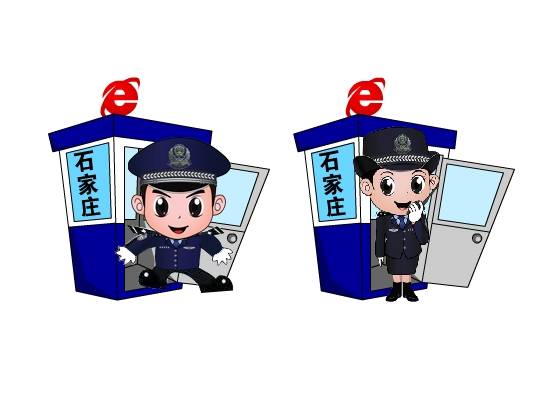实例介绍
【实例简介】
【实例截图】
【实例截图】
【核心代码】
package com.android.game;
import android.graphics.Typeface;
import android.view.MotionEvent;
import com.android.angle.AngleActivity;
import com.android.angle.AngleFont;
import com.android.angle.AngleObject;
import com.android.angle.AngleSound;
import com.android.angle.AngleSprite;
import com.android.angle.AngleSpriteLayout;
import com.android.angle.AngleString;
import com.android.angle.AngleUI;
import com.android.angle.AngleVector;
/**
* @author Ivan Pajuelo
*/
public class GameUI extends AngleUI
{
private static final float sSightSpeed = 5;
public Field mField;
private Sight mSight;
private AngleObject ogDashboard;
private AngleSprite sprTrackPad;
private AngleVector mAim;
private AngleVector mTrackPadPos;
private AngleVector mTrackPadDelta;
private AngleString strScore;
private AngleString strLifes;
public AngleSpriteLayout slGround;
public AngleSpriteLayout slSmiley;
public AngleSpriteLayout slSight;
private AngleSound sndMachineGun;
public int mScore;
private int mLifes;
private boolean mInverted;
//STEP 15
//This is the entry point
//Here we initialize all the variables that need when this UI is just activated
//>PASO 15:
//>Este ser?el punto de entrada
//>Aqu?inicializaremos todas la variables que necesitemos cuando se acabe de activar esta UI
@Override
public void onActivate()
{
mLifes=3;
mScore=0;
strLifes.set("" mLifes);
strScore.set("" mScore);
super.onActivate();
}
public GameUI(AngleActivity activity)
{
super(activity);
//STEP 16:
//We created all the SpriteLayouts that we will need
//>PASO 16:
//>Creamos todos los SpriteLayouts que vayamos a necesitar
slGround=new AngleSpriteLayout(mActivity.mGLSurfaceView,com.android.tutorial.R.drawable.fondo);
slSmiley=new AngleSpriteLayout(mActivity.mGLSurfaceView,32,45,com.android.tutorial.R.drawable.salto,0,0,32,45,8,8);
slSight=new AngleSpriteLayout(mActivity.mGLSurfaceView,32,32,com.android.tutorial.R.drawable.mira,0,0,32,32,2,2);
//STEP 17:
//Create and load a sound effect
//>PASO 17:
//>Creamos y cargamos un efecto de sonido
sndMachineGun=new AngleSound(mActivity,com.android.tutorial.R.raw.machinegun);
//STEP 18:
//Create a font for the dashboard strings
//>PASO 18:
//>Creamos una fuente para los marcadores
AngleFont fntBazaronite=new AngleFont(mActivity.mGLSurfaceView, 18, Typeface.createFromAsset(mActivity.getAssets(),"bazaronite.ttf"), 222, 0, 2, 255, 100, 255, 255);
//STEP 19:
//Create the game objects
//Here we use the quick insertion form
//>PASO 19:
//>Creaci髇 de los objetos de juego
//>Aqu?usamos la forma de inserci髇 r醦ida
//For the battlefield,
//>Para el campo de batalla,
mField=(Field)addObject(new Field(this));
//The sight
//>El punto de mira
mSight=(Sight)addObject(new Sight(this));
//And a group for dashboard and other floating things
//>y un grupo para marcadores y dem醩 cosas flotantes
ogDashboard=addObject(new AngleObject());
sprTrackPad=(AngleSprite) ogDashboard.addObject(new AngleSprite(160,380,new AngleSpriteLayout(mActivity.mGLSurfaceView,320,200,com.android.tutorial.R.drawable.panel)));
//STEP 20:
//Add the 2 dashboard strings
//>PASO 20:
//>Insertamos los 2 Strings de los marcadores
strScore = (AngleString) ogDashboard.addObject(new AngleString(fntBazaronite, "0", 310, 30, AngleString.aRight));
strLifes = (AngleString) ogDashboard.addObject(new AngleString(fntBazaronite, "0", 60, 30, AngleString.aRight));
//STEP 21:
//Create some vectors to store bidimensional values
//>PASO 21:
//>Creamos unos vectores para guardar varios valores bidimensionales
mAim=new AngleVector();
mTrackPadPos=new AngleVector();
mTrackPadDelta=new AngleVector();
//Esta variable indica si el control est?invertido
mInverted=false;
}
//Step 22:
//Create a function for the game logic.
//This function will be called every time you paint the screen and get as parameter
//the number of seconds that have elapsed since the last time you called it.
//Calling super.step, the step function of all children is called
//In this case, the field of battle, the sight and dashboard
//In this step by step, I will not comment on the game logic. Only the parts of
//the engine itself.
//>Paso 22:
//>Creamos una funci髇 para la l骻ica del juego.
//>Esta funci髇 ser?llamada cada vez que se pinte la pantalla y recibe como par醡etro
//>la cantidad de segundos que han pasado desde la 鷏tima vez que se la llam?
//>Al llamar a super.step, hacemos que se llame a la funci髇 step de todos los hijos que
//>tenga este objeto por debajo. En este caso, el campo de batalla, la mirilla y los marcadores
//>En este paso a paso, no voy a comentar la l骻ica del juego. S髄o las partes que correspondan
//>al motor en si.
@Override
public void step(float secondsElapsed)
{
super.step(secondsElapsed);
mSight.moveTo(mTrackPadPos);
mTrackPadDelta.set(mTrackPadPos);
mTrackPadDelta.mul(sSightSpeed*secondsElapsed);
mAim.add(mTrackPadDelta);
if (mAim.mX>1)
mAim.mX=1;
if (mAim.mX<-1)
mAim.mX=-1;
if (mAim.mY>1)
mAim.mY=1;
if (mAim.mY<-1)
mAim.mY=-1;
mField.moveTo(mAim);
}
//Step 23:
//Overload the onTouchEvent event to handle when the
//player touchs the screen.
//Also we can overload any other events such as onKeyDown or onTrackballEvent to
//respond to different input methods.
//>Paso 23:
//>Sobrecargamos el evento onTouchEvent para responder a las pulsaciones que haga
//>el jugador en la pantalla.
//>Tambi閚 podemos sobrecargar otros eventos como onKeyDown y onTrackballEvent para
//>responder a distintos m閠odos de entrada.
@Override
public boolean onTouchEvent(MotionEvent event)
{
//Prevent event flooding
//>Impedimos que el sistema sea sobrecargado por eventos de touch
//>M醲imo 60 por segundo
try
{
Thread.sleep(16);
} catch (InterruptedException e)
{
e.printStackTrace();
}
// -------------------------
float eX=event.getX();
float eY=event.getY();
if (event.getAction()==MotionEvent.ACTION_DOWN)
{
if (eX>sprTrackPad.mPosition.mX-sprTrackPad.roLayout.roWidth/2)
if (eY>sprTrackPad.mPosition.mY-sprTrackPad.roLayout.roHeight/2)
if (eX<sprTrackPad.mPosition.mX sprTrackPad.roLayout.roWidth/2)
if (eY<sprTrackPad.mPosition.mY sprTrackPad.roLayout.roHeight/2)
{
//STEP 24:
//Play a sound effect in an infinite loop with volume at 1005(1)
//>PASO 24:
//>Aqu?vemos como reproducir un sonido con volumen al 100%(1) y en un bucle infinito
sndMachineGun.play(1,true);
mSight.fire(true);
}
}
else if (event.getAction()==MotionEvent.ACTION_UP)
{
//STEP 25:
//Stop the sound playing
//>PASO 25:
//>Detenemos la reproducci髇 del sonido
sndMachineGun.stop();
mSight.fire(false);
mTrackPadPos.set(0,0);
}
else if (event.getAction()==MotionEvent.ACTION_MOVE)
{
if (eX>sprTrackPad.mPosition.mX-sprTrackPad.roLayout.roWidth/2)
if (eY>sprTrackPad.mPosition.mY-sprTrackPad.roLayout.roHeight/2)
if (eX<sprTrackPad.mPosition.mX sprTrackPad.roLayout.roWidth/2)
if (eY<sprTrackPad.mPosition.mY sprTrackPad.roLayout.roHeight/2)
{
if (mInverted)
mTrackPadPos.set(-(eX-sprTrackPad.mPosition.mX)/(sprTrackPad.roLayout.roWidth/2),-(eY-sprTrackPad.mPosition.mY)/(sprTrackPad.roLayout.roHeight/2));
else
mTrackPadPos.set((eX-sprTrackPad.mPosition.mX)/(sprTrackPad.roLayout.roWidth/2),(eY-sprTrackPad.mPosition.mY)/(sprTrackPad.roLayout.roHeight/2));
}
}
return true;
}
//STEP 26:
//This callback updates the number of remaining lives, also see how to return to the menu
//setting its UI
//>PASO 26:
//>En este callback para actualizar la cantidad de vidas restantes, vemos como volver al men?
//>estableciendo su UI
public void updateLifes(int lifes)
{
mLifes =lifes;
if (mLifes<0)
((StepByStepGame) mActivity).setUI(((StepByStepGame) mActivity).mTheMenu);
strLifes.set("" mLifes);
}
public void updateScore(int score)
{
mScore =score;
strScore.set("" mScore);
}
//STEP 27:
//Overload the onDeactivate event to empty the smileys' list and stop the sound
//if it is playing
//>PASO 27:
//>Sobrecargamos el evento onDeactivate para vaciar la lista de smileys y parar el sonido
//>si est?sonando
@Override
public void onDeactivate()
{
sndMachineGun.stop();
for (int s=1;s<mField.count();s )
mField.childAt(s).mDie=true;
super.onDeactivate();
}
///Continues in FIeld)
//(continua en Field)
}
好例子网口号:伸出你的我的手 — 分享!
小贴士
感谢您为本站写下的评论,您的评论对其它用户来说具有重要的参考价值,所以请认真填写。
- 类似“顶”、“沙发”之类没有营养的文字,对勤劳贡献的楼主来说是令人沮丧的反馈信息。
- 相信您也不想看到一排文字/表情墙,所以请不要反馈意义不大的重复字符,也请尽量不要纯表情的回复。
- 提问之前请再仔细看一遍楼主的说明,或许是您遗漏了。
- 请勿到处挖坑绊人、招贴广告。既占空间让人厌烦,又没人会搭理,于人于己都无利。
关于好例子网
本站旨在为广大IT学习爱好者提供一个非营利性互相学习交流分享平台。本站所有资源都可以被免费获取学习研究。本站资源来自网友分享,对搜索内容的合法性不具有预见性、识别性、控制性,仅供学习研究,请务必在下载后24小时内给予删除,不得用于其他任何用途,否则后果自负。基于互联网的特殊性,平台无法对用户传输的作品、信息、内容的权属或合法性、安全性、合规性、真实性、科学性、完整权、有效性等进行实质审查;无论平台是否已进行审查,用户均应自行承担因其传输的作品、信息、内容而可能或已经产生的侵权或权属纠纷等法律责任。本站所有资源不代表本站的观点或立场,基于网友分享,根据中国法律《信息网络传播权保护条例》第二十二与二十三条之规定,若资源存在侵权或相关问题请联系本站客服人员,点此联系我们。关于更多版权及免责申明参见 版权及免责申明



网友评论
我要评论